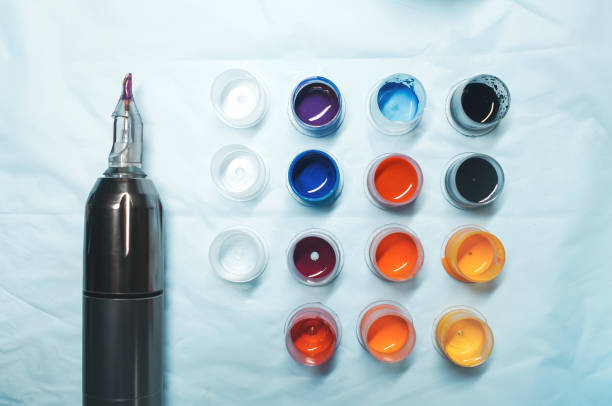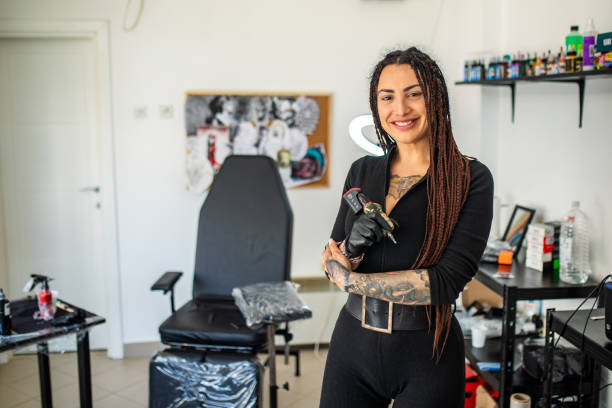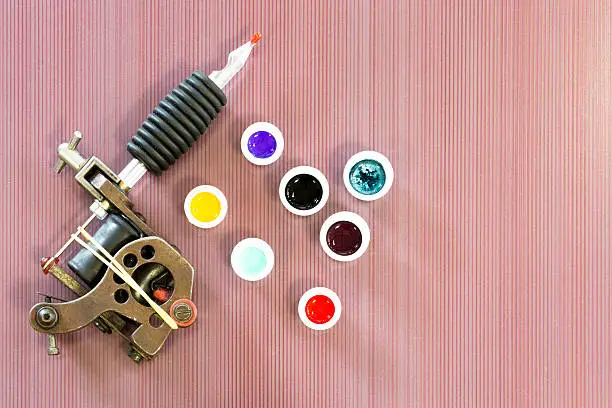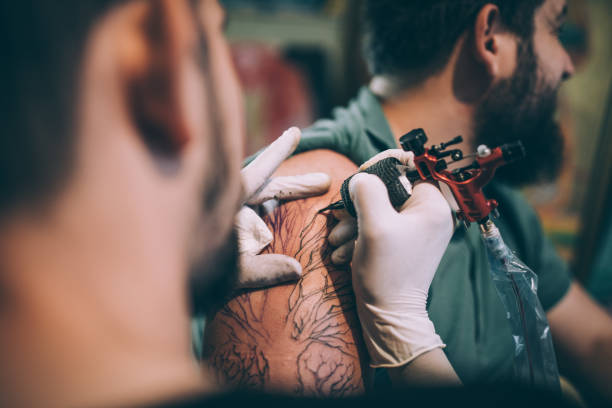Tattoos are a popular form of self-expression, and millions of people around the world proudly wear their inked designs. However, with the growing popularity of tattoos, concerns about the safety of tattoo ink have also emerged. Is tattoo ink toxic to the body? In this article, we’ll explore the composition of tattoo ink, potential health risks, and what you can do to minimize any potential dangers.
Contents
Understanding Tattoo Ink

Tattoo ink is a unique substance designed to be injected into the dermis, the second layer of skin. The ink particles are trapped in the dermis, which is why tattoos are permanent. Tattoo ink is made up of two main components: pigments and a carrier solution.
Pigments
Pigments are the substances that give tattoo ink its color. They can be derived from a variety of sources, including:
- Mineral-based pigments: These are natural pigments derived from minerals. For example, iron oxide is used for red and brown inks, while titanium dioxide is used for white ink.
- Organic pigments: These are carbon-based pigments derived from plants or synthesized in laboratories. They are commonly used in bright, vivid colors.
- Plastic-based pigments: Some modern inks use pigments made from plastic-based materials to achieve vibrant, long-lasting colors.
Carrier Solution
The carrier solution is the liquid that suspends the pigments and makes it possible to inject the ink into the skin. Common ingredients in the carrier solution include:
- Distilled water: The most common solvent used in tattoo inks.
- Alcohol: Ethyl or isopropyl alcohol is often used to prevent infection.
- Glycerin: A thickening agent that helps to stabilize the ink and keep it smooth.
- Propylene glycol: Another stabilizer that helps to keep the ink particles evenly distributed.
Potential Health Risks of Tattoo Ink

While many people get tattoos without any problems, there are potential health risks associated with tattoo ink. These risks can arise from the ingredients in the ink, contamination, or individual reactions to the ink.
Allergic Reactions
Some people may experience allergic reactions to certain pigments in tattoo ink. Red and yellow inks, in particular, are known to cause allergic reactions more frequently than other colors. Symptoms of an allergic reaction can include redness, itching, and swelling around the tattooed area.
Infections
If the tattoo ink or equipment is not sterile, there is a risk of infection. Bacterial infections can occur if bacteria enter the skin during the tattooing process. It’s crucial to choose a reputable tattoo artist who follows strict hygiene practices to minimize this risk.
Toxic Elements
Some tattoo inks contain potentially toxic elements, such as heavy metals. For example, black inks can contain high levels of carbon black, while other colors might contain metals like lead, cadmium, or mercury. These substances can be harmful if they leach into the body over time.
Carcinogenic Compounds
Certain pigments in tattoo inks have been found to contain carcinogenic (cancer-causing) compounds. For example, some red inks contain azo pigments, which can break down into carcinogenic compounds when exposed to sunlight. This has raised concerns about the long-term safety of some tattoo inks.
Granulomas and Keloids
Granulomas are small lumps that can form around foreign substances, such as tattoo ink particles. Keloids are raised areas of scar tissue that can form at the site of a tattoo. Both of these conditions can occur as a reaction to tattoo ink and can be difficult to treat.
Bloodborne Diseases
If proper sterilization procedures are not followed, there is a risk of transmitting bloodborne diseases, such as hepatitis B, hepatitis C, and HIV. Always ensure that your tattoo artist uses single-use needles and sterile equipment.
Regulatory Oversight and Safety Standards
Tattoo ink regulation varies significantly from country to country. In some places, tattoo inks are subject to rigorous safety standards, while in others, there is little to no regulation.
United States
In the United States, the Food and Drug Administration (FDA) has the authority to regulate tattoo ink. However, the FDA does not currently approve or certify any tattoo inks. The responsibility for ensuring the safety of tattoo inks largely falls on the manufacturers and tattoo artists.
European Union
The European Union has stricter regulations regarding tattoo inks. The European Chemicals Agency (ECHA) oversees the safety of tattoo inks and restricts the use of certain harmful substances. Recent regulations have banned or restricted the use of many pigments and chemicals previously used in tattoo inks.
Other Countries
Regulations in other countries vary widely. Some countries have comprehensive safety standards for tattoo inks, while others have minimal or no regulations in place. It’s important to research the regulations in your area and choose a reputable tattoo artist who uses safe, high-quality inks.
How to Minimize Risks

While there are potential risks associated with tattoo ink, there are steps you can take to minimize these risks and ensure a safe tattooing experience.
Choose a Reputable Tattoo Artist
One of the most important steps you can take is to choose a reputable tattoo artist who follows strict hygiene practices. Look for an artist who:
- Uses single-use, sterile needles and equipment
- Works in a clean, professional environment
- Is knowledgeable about the ingredients in the inks they use
- Has a good reputation and positive reviews from previous clients
Ask About the Ink
Don’t be afraid to ask your tattoo artist about the inks they use. Reputable artists should be transparent about the ingredients in their inks and the safety standards they adhere to. If an artist is unwilling or unable to provide this information, consider choosing a different artist.
Conduct a Patch Test
If you have sensitive skin or a history of allergic reactions, consider doing a patch test before getting a tattoo. A patch test involves applying a small amount of the ink to your skin to see if you have any adverse reactions. This can help you identify potential allergies before committing to a full tattoo.
Follow Aftercare Instructions
Proper aftercare is crucial for preventing infections and ensuring your tattoo heals well. Follow your tattoo artist’s aftercare instructions carefully, which may include:
- Keeping the tattoo clean and dry
- Avoiding soaking the tattoo in water
- Applying a recommended ointment or moisturizer
- Avoiding direct sunlight and harsh chemicals
Stay Informed
Stay informed about the latest research and regulations regarding tattoo inks. As new information becomes available, you can make informed decisions about the safety of the inks you choose.
Conclusion
While tattoo ink can pose potential health risks, many people get tattoos without any problems. By understanding the composition of tattoo ink, being aware of the potential risks, and taking steps to minimize these risks, you can enjoy your tattoo safely.
Always choose a reputable tattoo artist who uses high-quality inks and follows strict hygiene practices. Don’t hesitate to ask questions about the inks and ingredients used, and consider conducting a patch test if you have sensitive skin. Follow aftercare instructions carefully to ensure your tattoo heals properly and stays vibrant for years to come.
Remember that tattoos are a form of self-expression, and with proper care and attention, you can enjoy your ink with confidence. Stay informed about the latest developments in tattoo ink safety, and make choices that prioritize your health and well-being.





